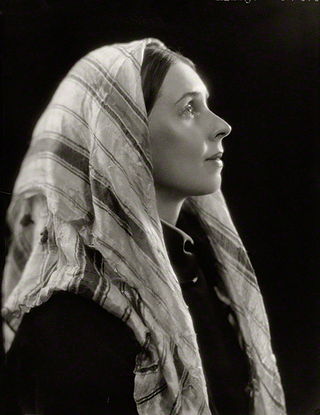
Lydia Lopokova, Baroness Keynes was a Russian ballerina famous during the early 20th century.

Marie Taglioni, Comtesse de Voisins was a Swedish-born ballet dancer of the Romantic ballet era partially of Italian descent, a central figure in the history of European dance. She spent most of her life in the Austrian Empire and France. She was one of the most celebrated ballerinas of the romantic ballet, which was cultivated primarily at Her Majesty's Theatre in London and at the Théâtre de l'Académie Royale de Musique of the Paris Opera Ballet. She is credited with being the first ballerina to truly dance en pointe.

Marie-Madeleine Guimard was a French ballerina who dominated the Parisian stage during the reign of Louis XVI. For twenty-five years she was the star of the Paris Opera. She made herself even more famous by her love affairs, especially by her long liaison with the Prince of Soubise. According to Edmond de Goncourt, when d'Alembert was asked why dancers like La Guimard made such prodigious fortunes, when singers did not, he responded, "It is a necessary consequence of the laws of motion".

Marius Ivanovich Petipa, born Victor Marius Alphonse Petipa, was a French and Russian ballet dancer, pedagogue and choreographer. Petipa is one of the most influential ballet masters and choreographers in ballet history.
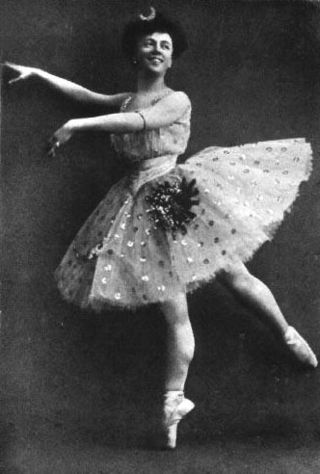
Olga Iosifovna Preobrajenska was a Russian ballerina of the Russian Imperial Ballet and a ballet instructor.

Carlo Blasis was an Italian dancer, choreographer and dance theoretician born in Naples. He is well known for his very rigorous dance classes, sometimes lasting four hours long. He danced in France, Italy, London and Russia. Blasis insisted that his students learn theories and definitions of dance steps. He trained all of Enrico Cecchetti's teachers and it is thought that Blasis's influence in his training is what led Cecchetti to create the Cecchetti method of ballet.

Down to Earth is a 1947 American musical romantic comedy film directed by Alexander Hall and starring Rita Hayworth and Larry Parks. It is a sequel to the 1941 film Here Comes Mr. Jordan, also directed by Hall. While Edward Everett Horton and James Gleason reprised their roles from the earlier film, Roland Culver replaced Claude Rains as Mr. Jordan.
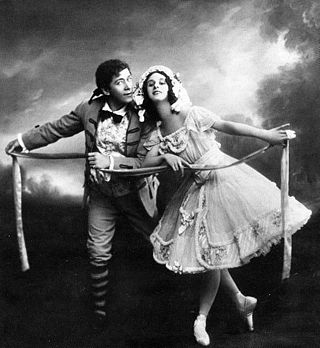
Nikolai Gustavovich Legat was a ballet dancer, choreographer and teacher.

Fiametta or Fiammetta, is a ballet in four acts and four scenes, choreographed by Arthur Saint-Léon to music by Ludwig Minkus, first presented by the Ballet of the Moscow Imperial Bolshoi Theatre on November 12–24, 1863 at the Moscow Imperial Bolshoi Theatre, Moscow, Russia, with Anna Sobeshchanskaya as Fiametta.
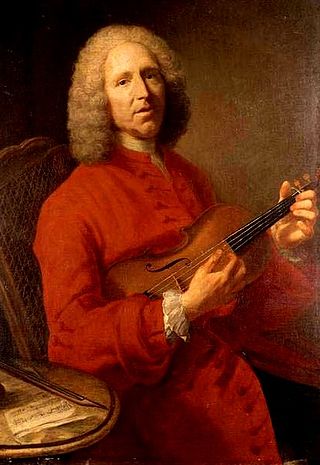
Les fêtes d'Hébé, ou Les talens lyriques is an opéra-ballet in a prologue and three entrées (acts) by the French composer Jean-Philippe Rameau. The libretto was written by Antoine Gautier de Montdorge (1707–1768). The work was first performed on 21 May 1739 by the Académie royale de musique at its theatre in the Palais-Royal in Paris.

Apollo is a neoclassical ballet in two tableaux composed between 1927 and 1928 by Igor Stravinsky. It was choreographed in 1928 by twenty-four-year-old George Balanchine, with the composer contributing the libretto. The scenery and costumes were designed by André Bauchant, with new costumes by Coco Chanel in 1929. The scenery was executed by Alexander Shervashidze, with costumes under the direction of Mme. A. Youkine. The American patron of the arts Elizabeth Sprague Coolidge had commissioned the ballet in 1927 for a festival of contemporary music to be held the following year at the Library of Congress in Washington, D.C.
Terpsichore was one of the classical Greek Muses. She was the Muse of dance and the dramatic chorus.
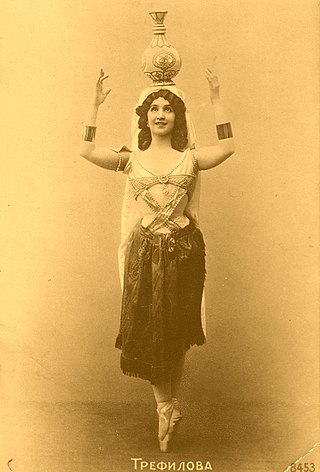
Vera Trefilova was a Russian dancer and teacher.
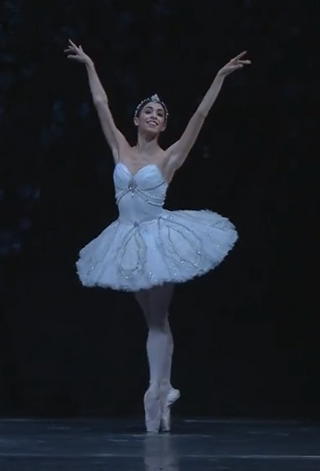
Yasmine Naghdi is a British ballerina and a principal ballerina of The Royal Ballet, London. She joined The Royal Ballet's corps de ballet in April 2010 while she was a graduate student at The Royal Ballet School. She made her way up through all the five ranks of The Royal Ballet and reached the highest rank aged 24, when she was promoted to principal ballerina.
Richard Scott Thomas was an American dancer, educator, and co-founder of the New York School of Ballet along with his wife Barbara Fallis. He is known as a teacher of Eliot Feld and Twyla Tharp.
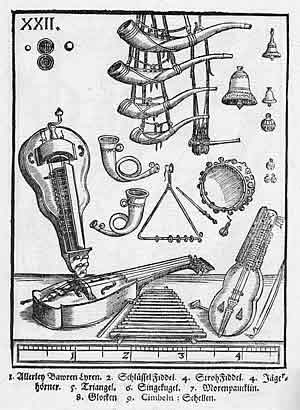
Terpsichore, or Terpsichore, Musarum Aoniarum, is a compendium of more than 300 instrumental dances published in 1612 by the German composer Michael Praetorius. The collection takes its name from the muse of dance.
In 1830, Italian ballet teacher and writer Carlo Blasis (1803–1878) published his second work on the analysis of ballet technique, called The Code of Terpsichore. This work was composed of figures, or illustrations, organized alphabetically, inscribing the ideal forms of poses, steps, and jumps in ballet. In codifying the tradition of ballet training, Blasis valued both the mechanical and aesthetic aspects of ballet.
Marie-Jeanne Godwin was an American ballet dancer. She was one of the first students of George Balanchine's School of American Ballet. Her dance career started at the Ballet Caravan in 1937, followed by stints at Ballet Russe de Monte Carlo, American Ballet Caravan, Ballet International and Ballet Society, before becoming a founding member of the New York City Ballet, where she danced for one season. She then joined Grand Ballet du Marquis de Cuevas, before briefly returning to the New York City Ballet in 1953, and retired in 1954. She was associated with Balanchine throughout her career.

Maria Vladimirovna Khoreva is a Russian ballet dancer and first soloist of the Mariinsky Ballet since 2018.
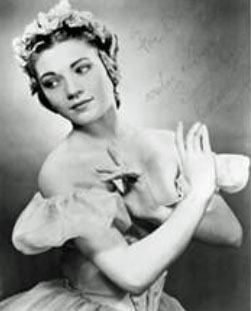
Barbara Fallis was an American ballet dancer and educator. She danced for many prominent companies, including the American Ballet Theatre and New York City Ballet, and later started her own school, the New York School of Ballet, with husband Richard Thomas.
















